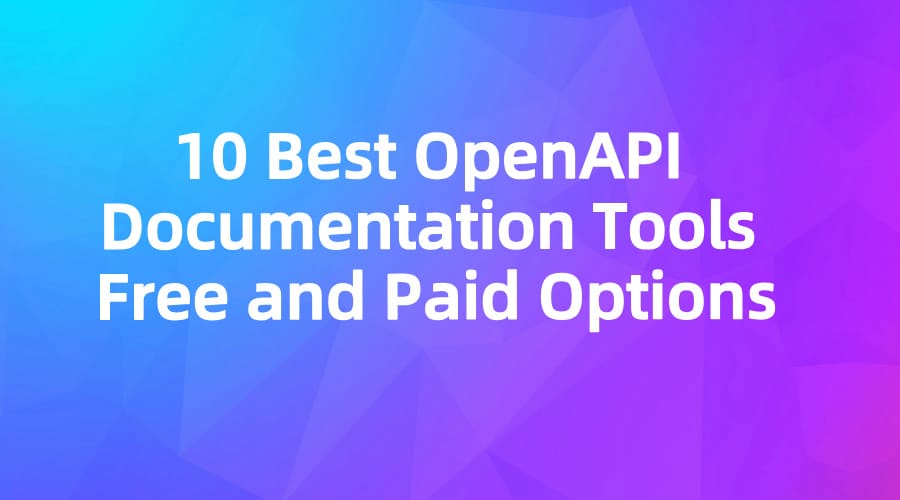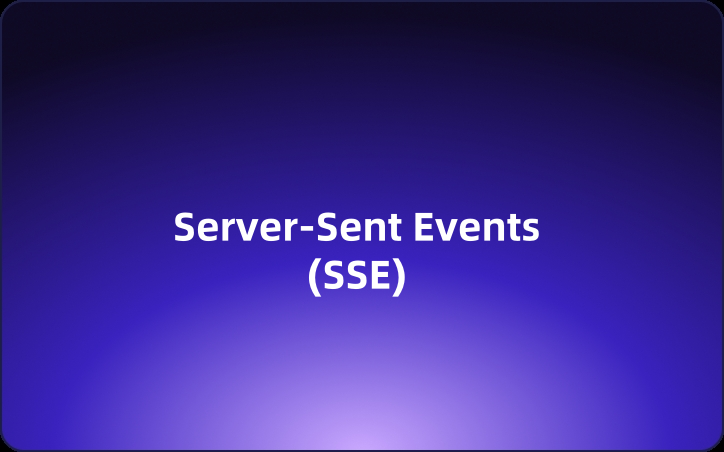Comprehensive Guide: What Are APIs and Their Types?
In today's fast-paced digital landscape, understanding the various types of APIs is crucial for developers and organizations alike. From REST to GraphQL, each API type offers distinct advantages and challenges that can significantly impact project success.
APIs (Application Programming Interfaces) are fundamental to modern software development, serving as the essential bridge for information exchange and service delivery between applications. While developers and executives are increasingly prioritizing APIs early in the development lifecycle, confusion remains about which API type is best suited for specific applications.
Each API type has its own architecture, evolving to meet the demands of the time. As technology has progressed and our relationship with it has evolved, we’ve seen APIs emerge to fill new gaps and serve diverse purposes. In this article, we will explore various types of API protocols, highlighting their advantages, disadvantages, common use cases, and factors to consider when selecting the best protocol for your needs.
1. REST API
REST (Representational State Transfer) APIs operate using standard HTTP request methods (GET, POST, PUT, DELETE, etc.). Designed to convey server-side data in simple formats like JSON and XML, REST aims to make data retrieval straightforward. Introduced by Roy Fielding in a 2000 academic paper,
REST APIs adhere to six key architectural constraints:
- Uniform Interface
- Statelessness
- Native Caching
- Client-Server Architecture
- Layered Systems
- The ability to provide executable code to clients
Advantages:
- Ease of Use: Built on the HTTP protocol, using standard request methods.
- Stateless: Each request is independent, simplifying server-side implementation.
- Wide Support: Compatible with nearly all programming languages and frameworks.
- Resource-Oriented: Clearly points to resources via URLs, enhancing API intuitiveness.
Disadvantages:
- Data Overload: Responses may include excessive information, leading to bandwidth waste.
- Versioning Challenges: Managing different versions can become complex as APIs evolve.
- Limited Flexibility: Complex queries may require multiple requests due to a lack of constraints on message structures.

2. SOAP API
SOAP (Simple Object Access Protocol) APIs utilize XML for message formatting and are suited for services requiring strong typing and standardization. Developed in the late 1990s, SOAP remains one of the most popular API types among developers.
Advantages:
- High Standardization: Provides strict protocol standards and security (e.g., WS-Security), ensuring requests function across various programming languages and platforms.
- Strong Typing: Uses XML Schema to define data types, enhancing consistency.
- Support for Complex Transactions: Built-in error handling capabilities help developers manage intricate transactions and security requirements effectively.
Disadvantages:
- Complexity: The formal nature of SOAP makes implementation more challenging, especially during debugging and deployment.
- Performance Issues: XML can create larger payloads that may slow down processing.
- Reduced Flexibility: Compared to REST, SOAP offers less flexibility and limits developer choices.
In recent years, SOAP’s popularity has declined due to its heavy payload and complexity, making it less favorable for simpler systems.
3. GraphQL API
GraphQL is a data query language that allows for fetching only the required data in a single request, promoting flexibility. Developed by Facebook in 2015, GraphQL was designed to offer more efficient data retrieval compared to REST.
Advantages:
- Flexible Queries: Clients can request specific data, minimizing data overload and enhancing API efficiency.
- Single Endpoint: Manages all data requests through one endpoint, simplifying API management.
- Simplified Version Management: API version upgrades can be handled through field deprecation.
Disadvantages:
- Complexity: The learning curve can be steep, particularly with intricate models.
- Potential Performance Issues: Excessive nested fields can degrade performance, and standard HTTP caching semantics are not readily applicable.
- Resource Intensive: Requires significant training and experience to master effectively.

4. gRPC API
gRPC (Google Remote Procedure Calls) uses HTTP/2 and Protocol Buffers to achieve efficient remote procedure calls, offering superior performance. It simplifies processes by using POST for most functions.
Advantages:
- High Performance: The combination of HTTP/2 and Protocol Buffers yields low latency and high throughput, ideal for lightweight loads.
- Strong Typing: Clearly defined data structures reduce the risk of errors.
- Multi-language Support: Works well across various environments.
Disadvantages:
- Learning Curve: Understanding HTTP/2 and Protocol Buffers can challenge new developers.
- Debugging Complexity: Binary data formats complicate monitoring and debugging.
- Limited Compatibility: May be overly complex for simpler applications.
5. WebSocket API
WebSockets enable real-time, two-way communication, making them ideal for applications that require instantaneous data exchange. They function atop the TCP/IP stack, allowing server message sending without polling.
Advantages:
- Real-Time Communication: Perfect for applications needing immediate updates (e.g., chats, online gaming).
- Efficiency: Persistent connections cut down on the overhead from repeated requests.
- Bandwidth Savings: Only sends data as needed, conserving bandwidth compared to traditional HTTP.
Disadvantages:
- Complex Implementation: Managing long-lived connections can introduce challenges, including heartbeat checks and reconnections.
- Limited Applicability: Best for applications focused on real-time interactions.
- Security Concerns: Providing security and cross-domain management can be more intricate compared to HTTP.

6. OpenAPI (Swagger)
OpenAPI is a standard specification for describing RESTful APIs, making them easier to document and understand.
Advantages:
- Documentation:Automatically generates API documentation, facilitating developer understanding and usage.
- Readability:Utilizes standardized formats (like YAML or JSON) with a clear structure, making it easy to read.
- Tool Support:Offers a rich ecosystem of tools (such as Swagger UI and Swagger Codegen) that can generate client code and test cases.
- Version Management:Supports API version control, making updates and maintenance easier.
Disadvantages:
- Static:Describes the API structure, unable to dynamically respond to real-time data changes.
- Learning Curve:Newcomers may find it challenging to understand and use OpenAPI specifications.
- Limitations:While capable of describing complex APIs, it may sometimes fail to capture the intricacies of highly dynamic API scenarios.

7. Streaming API
Streaming APIs are designed for real-time data streams and are commonly used in applications like social media and financial markets.
Advantages:
- Real-Time Capability:Supports real-time data pushing, making it suitable for applications that require quick responses (e.g., stock trading, social media updates).
- Efficiency:Reduces request overhead through persistent connections, saving resources and time.
- Adaptability:Can handle large-scale data streams, making it suitable for scenarios requiring continuous data updates.
Disadvantages:
- Complexity:Implementation and maintenance can be complicated, requiring consideration of connection management, error handling, and other issues.
- Resource Consumption:Prolonged connection times may lead to high resource usage, impacting overall system performance.
- Compatibility:Support for Streaming APIs may vary across different platforms or languages, potentially leading to cross-platform issues.

Choosing the Right API Type
Clearly, there is no “one-size-fits-all” API type. Each has its unique characteristics suited for specific applications. When making decisions, consider factors like:
- What programming language will you use?
- What is your development environment?
- What are the essential functions of this API?
- What skills does your team possess?
- What resources have you allocated for this project?
Answering these questions can guide you to the API type that best meets your needs. Remember, testing one or two types through small proof-of-concept projects can help you understand their capabilities.
Conclusion
APIs are the cornerstone of modern software integration, empowering organizations to tap into new opportunities, ignite innovation, and enhance their digital capabilities. They are set to evolve beyond their current functionalities, marking the dawn of a new era in digital integration. This transformation will increase the complexity of APIs, not only enhancing interactions within industries but also fostering interconnected digital ecosystems across diverse sectors. APIs will play a pivotal role in accelerating advancements in fields like artificial intelligence (AI), the Internet of Things (IoT), and machine learning, paving the way for innovative applications and creating smarter, more efficient systems.
In the future, APIs will be closely linked to enhanced security and data privacy measures. As our digital interactions grow more complex and become essential to our daily lives, prioritizing robust security protocols in API development will be crucial. This emphasis on security is not just a technical imperative but also vital for maintaining user trust and adhering to global regulatory standards. Ultimately, the future shaped by APIs is not solely about technological progress; it is also about fostering a secure, efficient, and interconnected digital landscape that opens up new possibilities and transforms how we engage with technology.
We hope this article helps you distinguish between popular API types. Each type serves its unique purposes, and with careful, targeted decisions, you can create an API that is both effective and resource-efficient.
If you haven't downloaded the EchoAPI application yet, you can download it for free here.




 EchoAPI for VS Code
EchoAPI for VS Code

 EchoAPI for IntelliJ IDEA
EchoAPI for IntelliJ IDEA

 EchoAPl-Interceptor
EchoAPl-Interceptor

 EchoAPl CLI
EchoAPl CLI
 EchoAPI Client
EchoAPI Client API Design
API Design
 API Debug
API Debug
 API Documentation
API Documentation
 Mock Server
Mock Server








